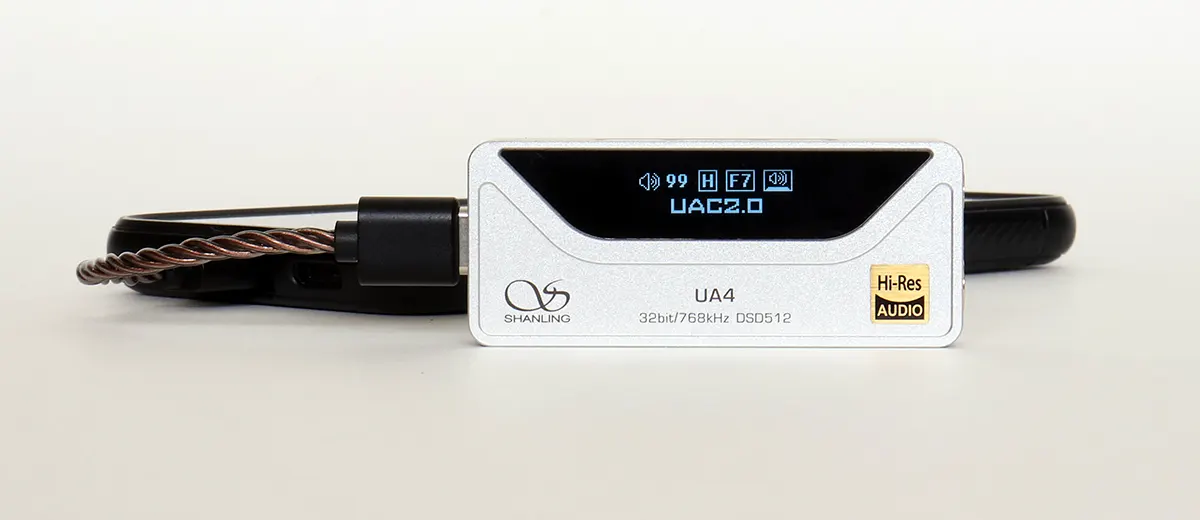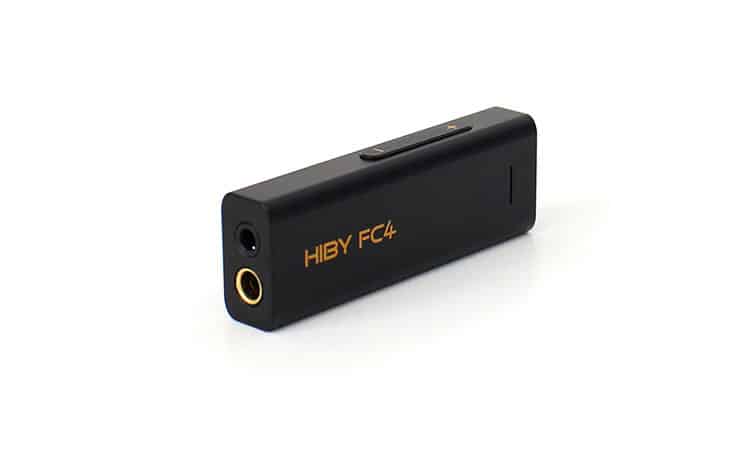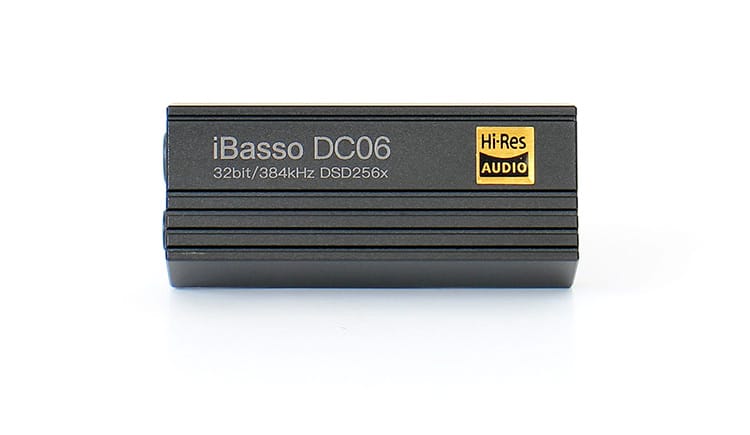Synergy
Power
It seems like Shanling doesn’t care to promote their dongle DACs as ultra-powerful dongles but prefers refinement, power efficiency, and a sonic production that can outperform most dongles in sound staging ability.
On these fronts, the UA4 does well, especially in power consumption which seems to be light on battery consumption but alongside that, the dongle runs cool all the time which denotes a high power efficiency level.
With that said, the UA4 seems to do best with efficient IEMs and doesn’t mind lower impedance models like the DUNU EST 112 or the Oriveti OH700VB that present lower 10Ω and 12Ω loads respectively, and don’t sit at the optimal 32Ω load.
Pairing
When pairing the Shanling UA4 you should pair it with a set of IEMs that can properly show off the staging capabilities of this DAC. Or one that reveals detail but won’t break the bank like Shanling’s own MG100 or their MG800.
I could mention plenty of IEMs that would pair up well with the UA4 but I wouldn’t go further than HIFIMAN Sundara’s or similar full-sized cans that require the same amount of power to be energetic enough in the bottom frequencies to not sound anemic.
Select Comparisons
HiBy FC4
Technical
Equipped with dual ES9218 DACs plus dual ES9603 amplifiers, the HiBy FC4 is a formidable sparring partner to the UA4 because of the many similarities they share.
Dual headphone jacks, dual DACs, PCM, DSD, and MQA capability, and Hi-Res certified sound quality in an all-metal body that also sports a set of volume control buttons are all common features to both models.
However, there’s no OLED screen with selectable features on the FC4.
Design
The HiBy FC4 is the largest dongle in this comparison but is certainly not the heaviest. It also has a body style that is free from sharp edges and sharp corners and I would consider it pocket-friendly.
All the implementations translate into a clean, simple design. The overall color scheme is a classic all-black with gold letters but it’s minimalistic above anything.
Construction-wise, this model seems to adopt an old design that combines two shells that slip onto one another and held together by two visible screws. That’s old school.
Performance
The HiBy FC4 is the warmest sounding dongle DAC within this comparison and it could come across as high frequency recessed until you keep listening and find that it’s well extended in the upper range. It just presents high frequencies more darkly.
But the low end comes across well represented and forward driving. It has nothing to do with power in this case. Power-wise, the HiBy FC4 is the least powerful in this comparative lineup but it has one of the most focused soundstage, second to the UA4.
However, the FC4 can project a taller panorama and seems to be the only dongle DAC that can rear project occasionally. None of the other models can do that.
FiiO KA13
Technical
If power output is top on your list, then the FiiO KA13 is one to look at since it can supply up to 550mW per side off its balanced 4.4mm Pentaconn connector even though it is offered at the lowest price within this comparison.
Although considered a budget model, FiiO throws in a couple of SGM8262 opamps that produce a low noise output measured at 1.7µV and 122 dB SNR.
The main component, the DAC, includes a CS43131 which is not a TOTL chipset but it has been used many times successfully. FiiO has used this chip inside the KA2, for example. The KA5 however, steps up to the CS43198 which is a high-tier chip and it certainly tops the KA2 sonically.
FiiO pulled a rabbit out of the hat and for under a bill, one could get a dongle DAC amplifier with lots of raw brawn, an open hardware LED lit window display with lots of features that are accessible by using their Control app which, by the way, seems to be one the most polished apps included with most of these dongle DACs.
The KA13 is, in fact, the best buy due to the component set, app, and construction quality combined. This dongle I do recommend for those who worry about having enough driving power from a dongle DAC and want a good value item in general.
Design
First off, the KA13 comes in two color schemes, silver, and black. I like the hardware window that’s backlit with an LED that lets you know what format the KA13 is decoding.
It also has the uniqueness of something called ‘Dmode’ which translates into desktop mode. It’s just another way of calling what everyone else calls a gain feature. It is set rather high and it seems to have a high level of gain.
Again, the KA13 is a joint venture with Jade Audio so the shell has that Jekyll and Hyde appearance in that one side is labeled as a FiiO product and the other is labeled as a Jade Audio product.
Performance
I immediately noticed an increase in element size and width on the KA13. Instruments that fall center stage and within the vocal range, including vocals, are portrayed larger. The UA4 on the other hand shrinks those elements and increases your ability to focus on each one.
It seems the UA4’s updated DAC chip is the culprit of the improvements in precision within the soundstage. But If your IEMs or headphones are hard to drive, the KA13 takes the cake since it has a much higher output rating.
The one aspect holding the KA13 back is just that, the DAC chip. The now older CS43131 chipset is perfectly fine for generally good performance but it tends to sound closer to clinical. The newer DAC variants improve on that aspect on top of the soundstage improvements.
iBasso DC06
Technical
The iBasso DC06 takes a different approach in many ways from the other dongle DACs in this comparison. Yes, it’s also a dual SOC dongle but iBasso opted for a twin ES9219C setup that feeds a single 3.5mm output connection capable of 140mW per side at 16Ω.
If you need MQA capability, the DC05 also handles MQA. There’s further capability, DSD256, and PCM at up to 384kHz as well. So it seems to be just as capable in the digital realm as far as handling digital music formats.
Design
There is a general commonality here in that both these dongles, the DC06 and the UA4 have the same dual headphone output set, and the same USB-C port that accepts PCM, DSD, and also MQA at the hardware unfolding level.
The UA4 is longer, but the DC06 is chunkier and presents a couple of sharp corners. The design resembles the old-school automotive amplifier in that the shell uses side fins for cooling purposes. The metal shell is also decorated in a classic black and gold color scheme.
Performance
The iBasso DC06 comes close to a realistic tonality and is a great performer when it comes to accurate timbre. It has one of the most introverted sound signatures within this group and certainly more so compared to the UA4.
This enhances your focus and is good for up close performances, Jazz music, and when the studio recording is trying to recreate the ambiance it was recorded.
However, if your preferences are complex, and fast-acting, for example, heavy metal, this one might get congested more than the UA4. The UA4 widens the recording panorama to avoid just that effect.
The one area where the UA4 takes a lead by a nose is within its soundstage which is taller and wider but never loses focus.
The DC06 edges out the UA4 in power output since it’s rated to produce 320mW on the balanced side and the DAC section is very stable. But so is the UA4 in that sense.
Our Verdict
I would rate the Shanling UA4 as sonically superior to the flagship UA5, which, given the price points, should be the other way around. If it wasn’t for the UA5’s hybrid battery, refined chassis, and multifunction rotary volume knob, the UA5 would have nothing more to offer for the extra expense.
The UA4 is that good. It can outperform the top dog within Shanling’s dongle DAC lineup and that means one thing. Shanling has to go to the table and discuss refining the UA5 if it wants to keep the top model position. Perhaps there’s a plan for a UA6 in the works?
The UA4 dongle DAC is a smart investment for portability with a pleasing sonic performance for both IEMs and headphones without draining your phone’s battery resources. Its attributes make it an attractive offering from Shanling that should appeal to a wide audience considering its $99 price point.
Shanling UA4 Technical Specifications
- Weight: 20.8g
- Dimensions: 60 x 25 x 11 mm
- Hi-Res support: 768kHz / 32bit & DSD512 / 16x MQA
- Gain settings: High and low
- DAC chip: ESS ES9069Q
- Digital filters: 8 filters
3.5mm output
- Output power: 2.1V @ 32Ω ( 137mW @ 32Ω)
- Frequency response: 20 – 40 kHz (-0.7db)
- THD+N: 0.008% @ 32Ω (A-weighted @ 1.5V)
- Dynamic range: 120db @32Ω (A-weighted)
- Channel separation: -71db @32Ω
- Output impedance: 0.4Ω
4.4mm Output
- Output power: 2.7V @ 32Ω ( 227mW @ 32Ω)
- Frequency response: 20 – 40 kHz (-0.7db)
- THD+N: 0.008% @ 32Ω (A-weighted @ 2V)
- Dynamic range: 116db @32Ω (A-weighted)
- Channel separation: -106db @32Ω (A-weighted)
- Output impedance: 0.8Ω







